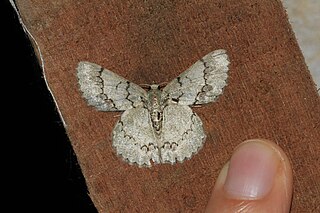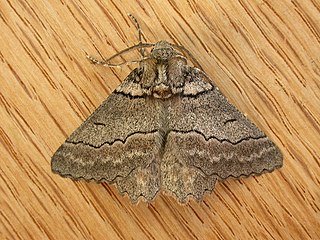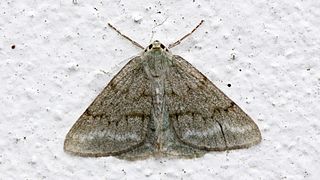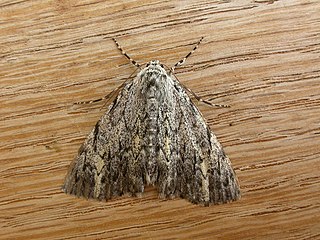
Hypobapta diffundens, the diffundens grey, is a moth of the family Geometridae first described by Thomas Pennington Lucas in 1891. It is found in the Australian state of Queensland.

Aeolochroma is a genus of moths in the family Geometridae described by Prout in 1912.

Epipristis is a genus of moths in the family Geometridae erected by Edward Meyrick in 1888.

Hypobapta is a genus of moths in the family Geometridae described by Prout in 1912.

Hypodoxa is a genus of moths in the family Geometridae described by Prout in 1912.
Paraterpna is a monotypic moth genus in the family Geometridae. It consists of only one species, Paraterpna harrisoni, which is found in New South Wales, Australia. Both the genus and species were first described by Gilbert M. Goldfinch in 1929.

Hypobapta percomptaria, the southern grey, is a moth of the family Geometridae first described by Achille Guenée in 1857. It is known from Australia, including South Australia, New South Wales, Queensland, Victoria and Tasmania.

The Pseudoterpnini are a tribe of geometer moths in the subfamily Geometrinae. The tribe was described by Warren in 1893. It was alternatively treated as subtribe Pseudoterpniti by Jeremy Daniel Holloway in 1996.
Cyneoterpna alpina, the alpine grey, is a moth of the family Geometridae. The species was first described by Gilbert M. Goldfinch in 1929 It is found in the Australian state of New South Wales.

Hypobapta xenomorpha is a moth of the family Geometridae first described by Oswald Bertram Lower in 1915. It is found in Australia.

Hypobapta tachyhalotaria is a moth of the family Geometridae. It is found in Tasmania and possibly New South Wales and Queensland.
Hypodoxa bryophylla, the green looper moth, is a moth of the family Geometridae. The species was first described by Gilbert M. Goldfinch in 1929. It is found in the Australian states of Victoria, New South Wales and Queensland.
Pingasa cinerea, the tan-spotted grey, is a moth of the family Geometridae. The species was first described by William Warren in 1894. It is found in the Australian states of New South Wales, Queensland, Tasmania and Victoria.
Aeolochroma melaleucae is a moth of the family Geometridae first described by Gilbert M. Goldfinch in 1929. It is found in Queensland, Australia.
Aeolochroma mniaria is a moth of the family Geometridae first described by Gilbert M. Goldfinch in 1929. It is found in New South Wales, Australia.
Aeolochroma olivia is a moth of the family Geometridae first described by Gilbert M. Goldfinch in 1943. It is found in New South Wales, Australia.
Aeolochroma rhodochlora is a moth of the family Geometridae first described by Gilbert M. Goldfinch in 1929. It is found in New South Wales, Australia.
Aeolochroma viridicata is a moth of the family Geometridae first described by Thomas Pennington Lucas in 1890. It is found in Australian states of New South Wales and Queensland. Adultsts have a complex green and brown or grey pattern.
Austroterpna idiographa is a moth of the family Geometridae first described by Gilbert M. Goldfinch in 1929. It is found in New South Wales, Australia.

Rhuma divergens is a moth of the family Geometridae first described by Gilbert M. Goldfinch in 1929. It is found in New South Wales, Australia.








